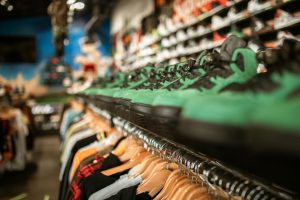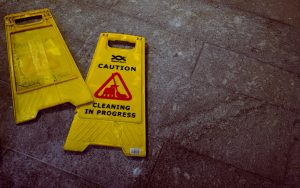Counterfeit Products: The Battle for Authenticity
The rise of counterfeit products has been a persistent problem in the global market. From luxury items like designer handbags to everyday essentials like medicines, these fake goods have flooded the market and caused significant damage to both consumers and businesses. The battle for authenticity has become an ongoing challenge for companies and regulators alike, with millions of dollars being spent to combat this growing issue. In this article, we will delve deeper into the world of counterfeit products and explore the measures being taken to protect consumers and uphold the integrity of trusted brands.
The Multibillion-Dollar Counterfeit Industry
The production and sale of counterfeit goods have reached alarming levels, with a reported 3.3% of global trade being counterfeited or pirated. This translates to a staggering economic loss of around $700 billion annually. The problem is not confined to one industry alone, as counterfeits can be found in various sectors such as fashion, electronics, beauty, and even pharmaceuticals.
The Dangers of Counterfeit Products
One of the biggest risks of purchasing counterfeit products is the potential harm they can cause to consumers. Fake medicines, for example, pose a significant threat to public health as they often contain dangerous substances or incorrect dosages. According to the World Health Organization, up to 10% of medicines in low- and middle-income countries are substandard or falsified. The use of these products can lead to treatment failure, drug resistance, and even death.
In addition to health risks, counterfeit goods also have a negative impact on the economy. The sale of fake products violates intellectual property laws and cuts into the profits of legitimate businesses. This, in turn, affects job security and ultimately slows down economic growth.
The Roots of Counterfeiting
Counterfeiters often operate in a sophisticated network, producing high-quality copies that make it difficult for consumers to distinguish between the real and the fake. These illegal operations thrive in countries with weak intellectual property laws and low levels of enforcement. The online market has also made it easier for counterfeiters to reach a larger audience, as they can sell their products through social media platforms and e-commerce websites with minimal risk of being caught.
The Role of Technology in Fighting Counterfeits
As counterfeiters continue to develop more advanced techniques, companies are investing in new technologies to keep up with the battle for authenticity. One example of this is the use of blockchain technology to track and authenticate products. Through the use of a unique digital code, consumers can verify the authenticity of the product they have purchased.
Other advancements include the implementation of hologram labels and RFID (Radio Frequency Identification) tags, both of which serve as tamper-proof security features that make it harder for counterfeiters to copy products. These technologies not only help protect consumers but also provide companies with vital data on the movements of their products, allowing them to track any unauthorized distribution and take necessary action.
The Role of Consumers
While companies and regulators are taking steps to combat counterfeiting, consumers also play a crucial role in the fight against fake products. Being more vigilant when making purchases and educating themselves on how to spot counterfeit items can help minimize the demand for fake goods. By choosing to buy from reputable sources and avoiding suspiciously low-priced items, consumers can send a message to counterfeiters that their illegal activities will not be tolerated.
The Future of Fighting Counterfeits
The battle for authenticity is an ongoing and ever-evolving fight. With new technologies emerging and stricter laws being implemented, there is hope for a future where counterfeit products will no longer pose a significant threat to consumers and legitimate businesses. However, it will require a collaborative effort from all parties involved – governments, companies, and consumers – to win this war against counterfeit goods.
In conclusion, the battle for authenticity is one that must be continuously fought to protect consumers and uphold the integrity of trusted brands. With a multibillion-dollar industry at stake, it is crucial for companies and regulators to stay one step ahead of counterfeiters and for consumers to remain vigilant in their purchasing decisions. Only through a united effort can we ensure a future where counterfeit products are no longer a threat in the global market.











